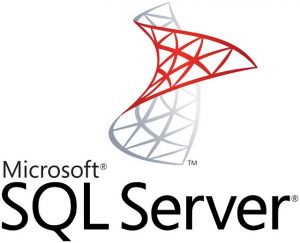Microsoft SQL Server License Management Standard
 Back in October 2014 we published a comparison of four SAM tools with Microsoft License Management capabilities (See: Microsoft License Management Group Test – The Results).
Back in October 2014 we published a comparison of four SAM tools with Microsoft License Management capabilities (See: Microsoft License Management Group Test – The Results).
This previous group test above was based on a questionnaire completed by participating vendors and an online briefing to quiz vendors on their capabilities.
For 2016, we would like to take this up a notch by formally benchmarking tool manufacturers against an open standard (This article) using real customer data. We wrote a similar standard for Oracle Database License Management back in November (See: Oracle Database License Management Verification Standard V1.0).
An open standard for Microsoft SQL Server License Management
The details published below are a first draft of our open standard for the management of SQL Server.
i.e. If I want to invest in tooling to manage the risk and cost of Microsoft SQL Server licensing in my environment – what should I be looking for?
This has been a community effort, thanks to forum contributors Steve O’Halloran, Deepika, Mike Austin and lmiguelmartins for their input.
We are publishing this standard so that others may add or critique it – please provide your feedback via the comments below or this thread on our forum and we will update the standard accordingly.
See also:
- 65% have no solution in place for managing SQL
- CCL report suggests Microsoft stunts its own growth through licensing complexity
- Microsoft Licensing Quick Guide 2015
Are SAM Tools fit for purpose for managing SQL?
The ITAM Review will use this standard to verify tools for SQL Server license management. Microsoft offers MAP and has industry affiliations with general SAM tools.
Our verification process will be open, transparent and collaborative. It will evolve with the industry over time (Hence sharing this open standard).
The ITAM Review verification will test both inventory and reconciliation (as you can read below).
Tools will be benchmarked using real customer data to independently verify whether they meet the criteria below.
Microsoft SQL Server License Management Verification Standard V1.0
Version 1.0 Published 16th May 2016
Entitlement
- Record and manage mixed entitlement records using different license grants into a consolidated ELP
- Manage prior and mixed license models (Device/CAL compared to Processor/Core)
- True up in the instance of shortfall must be trued up based on current model, historical compliance justifications might be based on mixed models.
Hardware Asset Management
- Identify physical processors and cores
- Identify virtual processors and cores of Virtual operating system environment
- Core factor table calculation to identify consumption or manual override based on processors / cores
License metrics
- Manage device / power based licensing
- Manage user based licensing
- Manage Server/CAL based licensing
Software Assurance
- Identify if mobility is enabled on Virtualisation (for when Software assurance is required for virtual mobility) and frequency (would it violate 90 day rules if applicable)
- Manage Software Assurance qualification critiera for optimization – Virtual mobility, failover rights, load balancing and so on. SAM tool can help provide transparency – when it is required or not and reasons why.
Exemptions
- MSDN subscriptons – Identify MSDN installs of SQL Server and align to users
- Non-production states – Ability to manage states relevant to license management (e.g. hot-backup, cold-backup, testing, development, staging, etc)
- OEM /Embedded installs – Identify / Manage scenarios when third party software has inbuilt SQL databases
- Supporting services – Identify ancillory SQL installs and relevance to license management (SQL reporting and integration services might be free when included but licensable if installed separately etc. )
Recognition
- Identify SQL edition and version
- Product Use Rights
- Manage SQL product use rights based on the edition and version of SQL
Cloud / Virtualisation
- Map virtual host to underlying physical infrastructure
- Manage entitlement based on VMs in a cluster > datacentre
- Identify and manage SQL instances in Azure or AWS
Consumption
- Report on actual usage – server last logged in date, last used date for SQL, business use from CMDB etc. (Are we still using this / do we still need it?)
- Manage indirect access to / multiplexing of SQL Server
Further Resources
- https://www.microsoft.com/en-in/Licensing/product-licensing/sql-server-2014.aspx
- https://blogs.technet.microsoft.com/uktechnet/2014/04/16/licensing-logic-licensing-sql-server-everything-you-need-to-know/
- https://www.microsoft.com/en-ca/Licensing/product-licensing/sql-server-2014.aspx
CALL FOR CRITIQUE
We are publishing this standard so that others may add or critique it – please provide your feedback via the comments below or this thread on our forum and we will update the standard accordingly.
We welcome your feedback on this first draft, have we missed anything? Is it realistic? Please let us know.
Thanks, Martin
Can’t find what you’re looking for?
More from ITAM News & Analysis
-
ITAMantics - April 2024
Welcome to the April 2024 edition of ITAMantics, our monthly news podcast where we discuss the biggest ITAM stories from the last month. George is joined this month by AJ Witt and Ryan Stefani. Stories tackled ... -
Broadcom is removing expired VMware licences from its portal - take action now!
Hot on the heels of Broadcom’s announcement of the end of perpetual licences for VMware it has given customers barely a week to download any keys for licenses from its portal with expired support. This is ... -
Who Loses When Broadcom Wins?
News of a new Broadcom deal rarely arrives with great fanfare. The November 2023 VMware acquisition provoked open worry online and in business circles, with many critics wondering whether the former Hewlett-Packard spinoff’s reputation would prove ...